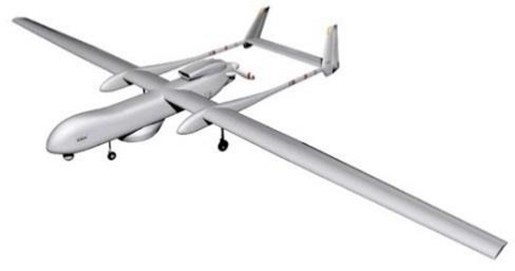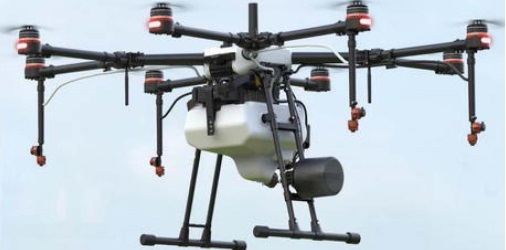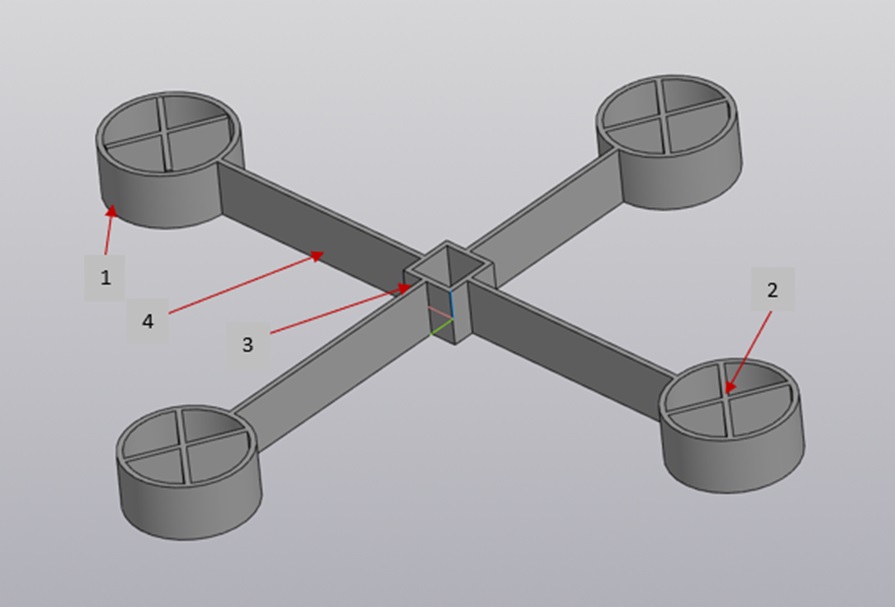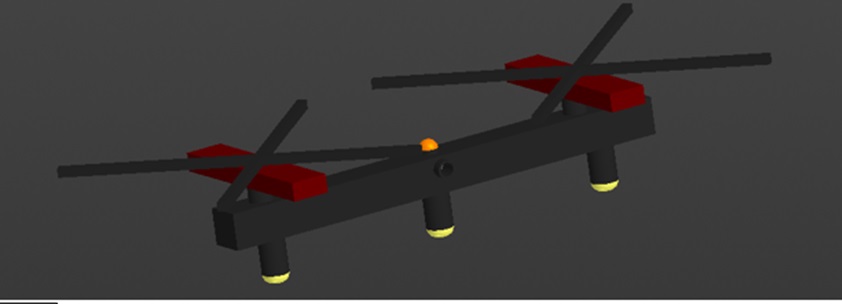EVALUATION OF THE EFFECTIVENESS OF THE USE OF AN IRRIGATION SYSTEM USING UAVS
EVALUATION OF THE EFFECTIVENESS OF THE USE OF AN IRRIGATION SYSTEM USING UAVS
Abstract
The article discusses the system of automated irrigation of agricultural crops using an unmanned aerial vehicle. When processing crops, 5% of the crop is damaged by wheeled or tracked vehicles. Machinery damages crops with a wheeled or tracked engine, which negatively affects soil fertility and the amount of harvest not only this year, but also in subsequent years. A large number of maintenance personnel of the operated equipment, its repair, refueling with fuels and lubricants are the reason for high costs for agribusiness.
The paper describes the design of an irrigation complex based on an unmanned aerial vehicle and presents an economic justification for the rationality of its use in agriculture.
1. Introduction
Agriculture is a branch of the economy that is engaged in the production of food and non-food resources on agricultural land. It includes various activities such as plant cultivation (crop production) and animal husbandry (animal husbandry). Agriculture plays a key role in ensuring food security and meeting the food needs of the population , . Within the framework of agriculture, farmers, gardeners and livestock breeders are engaged in the cultivation of wheat, corn, rice, vegetables, fruits, as well as the breeding of cattle and small cattle, pigs, poultry and fish. They use various methods and technologies such as irrigation, fertilization, tillage, genetic breeding and the use of modern technology. Agriculture is of great importance for the economic development of the country, especially for developing countries, where most of the population is employed in this industry. It provides jobs for millions of people and is a source of income for rural communities. In addition, agriculture is the main supplier of raw materials for the food industry, textile industry and other sectors of the economy. It also affects the environment and requires management and control to maintain sustainable development , .
Unmanned aerial vehicles are divided into two types. The first type is unmanned aerial vehicles of the aviation type (Fig. 1). They are aviation equipment similar to traditional aircraft, capable of performing complex tasks in long continuous flight and at high altitude .

Figure 1 - An unmanned aerial vehicle of the aviation type
Note: according to the source [5]

Figure 2 - Multi-rotor unmanned aerial vehicle
2. Research methods and principles
Maximum efficiency in agriculture can be achieved only by having up-to-date and accurate information about the area, topography, and soil specifics of the fields. Unmanned aerial vehicles, or drones, are radio-controlled or autonomous flying devices without pilots on board. They are usually equipped with cameras or other sensors to transmit images or data in real time. Unmanned aerial vehicles have gained popularity in various fields, including military, civilian, commercial and scientific fields. They are used for various purposes, such as surveillance, support for military operations, delivery of medical and humanitarian goods, shooting videos and photographs, as well as in the agricultural and construction industries , , .
The UAV can consist of the following basic parts (Fig.3): engines, propellers, flight controller, the frame.

Figure 3 - The composition of the basic parts of the UAV:
1 - engines; 2 - propellers; 3 - flight controller; 4 - the frame
3. Design features
The use of drones in agriculture and in agriculture in general is one of the most promising areas of application of this technology. UAVs can be effectively used for planning and controlling stages of agricultural production, as well as for chemical treatment of crops and other plants. At the same time, the main criterion for the introduction of UAVs is economic feasibility. UAVs will allow you to receive relevant and effective information when it is needed, in addition, the information accumulated over a long period of time will allow you to analyze various processes.
Proposed upgrade: it is proposed to use a standard aluminum profile with a length suitable for a specific field for the frame of the structure. This frame is a folding structure of various lengths, for specific tasks. It is proposed to make landing holes for drones on the upper outer side of the profile, which will be used as a propulsor. In the middle (inner part) of the profile, it is proposed to install a bypass valve, to which a threaded hole for mounting a watering hose will be additionally mounted, through which liquid fertilizer or water will be supplied. In the lower part of the profile there are spray devices for uniform spraying of liquid. The 3D model of this project is shown in Fig. 4, which was performed in a specialized program COMPASS – 3D.

Figure 4 - 3D model of the proposed contactless irrigation and fertilizer system
4. Main results
In the work, an analysis of the economic efficiency of using the proposed irrigation system was carried out . The costs of: staff salaries, fuel, repair and maintenance of machinery, loss of crops were considered. Staff salary: tanker driver – 80 thousand rubles/month; operator of irrigation/fertilizing self–propelled plant - 60 thousand rubles/month. Fuel and lubricants: Self-propelled irrigation/fertilizing plant, for example, "Fog-1M" consumes 0.25 l/ ha. On average, an agricultural firm owns 2000 hectares of land, in order to process them, this installation must come to the field, logistics costs will approximately amount to 400 liters of AI 92 gasoline (48 rubles / l), which is 19200 rubles. For irrigation /fertilizing work: 0.25 l/ha*2000ga= 500 liters of gasoline AI 92), which is equal to 24,000 rubles. The cost of lubricants (engine oil and gearbox) will amount to 10 thousand rubles. In total, the total cost of fuel is 19200 rubles.+24000 rubles.+ 10 thousand rubles = 53200 rubles.
Repair and maintenance of this equipment will average 60 thousand rubles. In total, the material costs of a self-propelled irrigation/ fertilizing plant are: 253200 rubles, excluding the purchase of the installation itself. During watering /fertilizing actions, 5% of the crop is destroyed. From 2000 hectares of wheat, the harvest result will be 5,000 tons, 5% of the destroyed crop will be 250 tons, at a cost of 1 ton of wheat – 11,500 rubles. The loss is 2,875,000 rubles. When using a contactless irrigation system, the costs will be: Tanker driver – 50 thousand rubles /month (due to fewer flights); Operator of a contactless irrigation/fertilizing plant - 100 thousand rubles /month; fuel: spec. installation consisting of a KAMAZ car – 40 thousand rubles. Maintenance and repair of special equipment – 50 thousand rubles; drones – 70 thousand rubles. Total: 300 thousand rubles. When using a contactless irrigation system and fertilizers, agricultural crops do not deteriorate and the benefit from this is 2,875,000 rubles.
5. Conclusion
Thus, it is worth noting that unmanned aerial vehicles are a powerful tool for agriculture. Technology does not stand still, drones are moving to expand their functionality, which opens up new opportunities for digital agriculture. UAVs are more economically profitable than the expansion of the vehicle fleet, its operation and maintenance. The proposed solution is very economically beneficial: spending on personnel, machinery, equipment, and maintenance is reduced. When using this system, crop spoilage by wheeled/tracked vehicles is reduced due to the lack of contact between the watering plant and the crop. According to experts, the efficiency of UAVs when processing fertilizers is at least 25 times higher than manual labor and 5 times higher than automatic (motor transport) .
